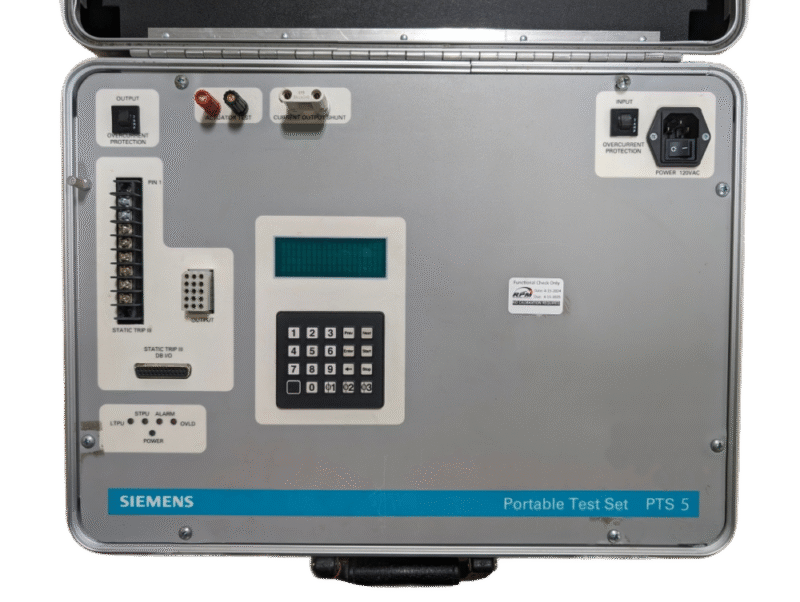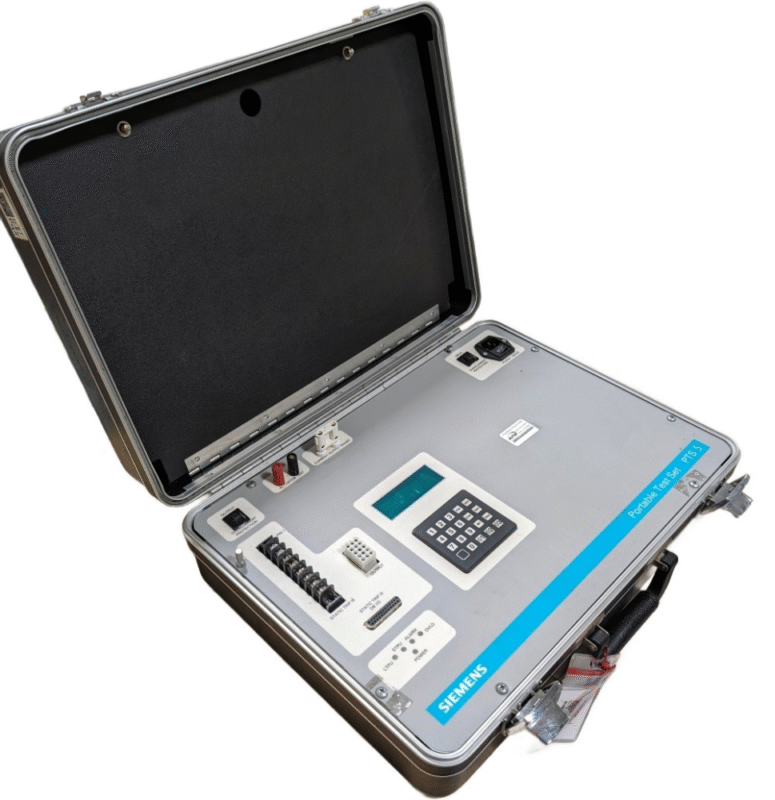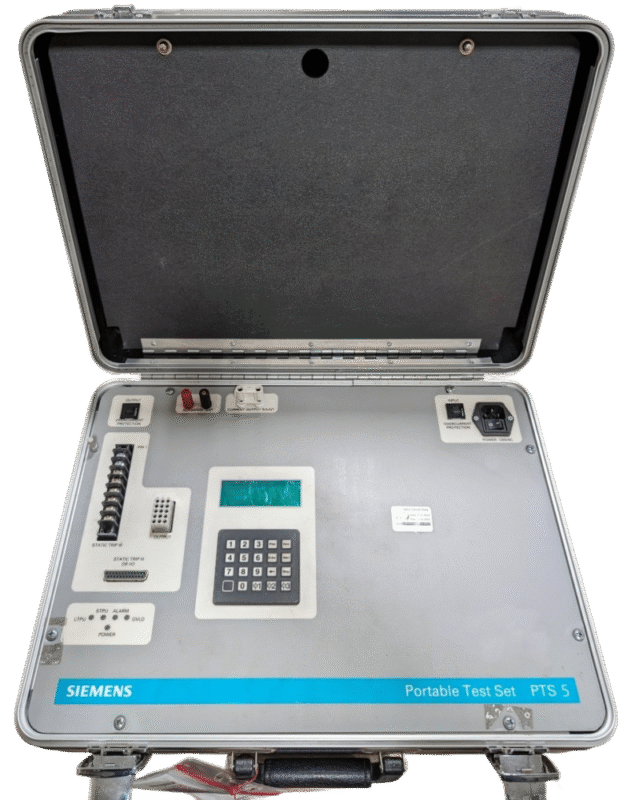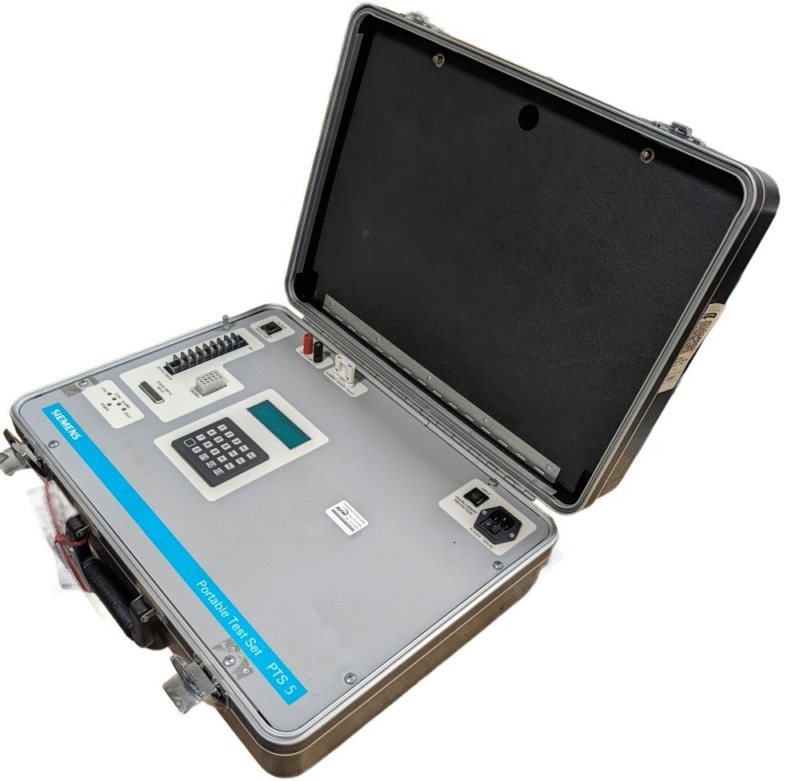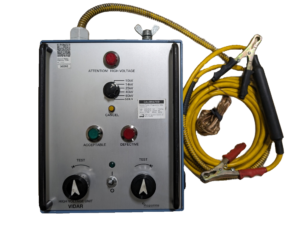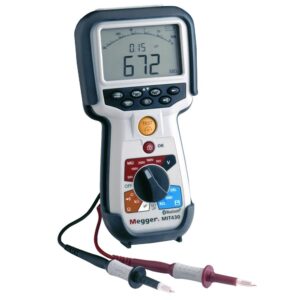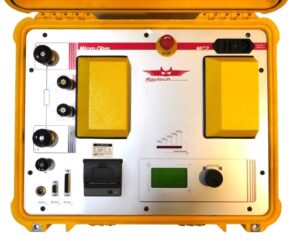The Siemens PTS-5 is a specialized testing device designed to verify the functionality of the Static Trip III (STIII) overcurrent tripping system used in RL circuit breakers.
Here’s a breakdown of its key features and capabilities:
How it Works:
Key Features:
Benefits:
Additional Tips:
Resources:
How it Works:
- Connection: The PTS-5 is connected to the secondary terminals of the STIII unit.
- Test Signal: The device injects a controlled current signal into the STIII unit, simulating various fault conditions.
- Response Monitoring: The PTS-5 monitors the STIII’s response to the injected signal, verifying its tripping behavior.
- Test Results: The device provides clear and concise test results, indicating whether the STIII unit is functioning correctly.
Key Features:
- Purpose: Secondary Injection Testing of STIII Overcurrent Tripping Systems
- Design: Self-contained briefcase for portability
- Power Requirement: 120VAC
- Core Component: Microprocessor-controlled constant current source
- Functionality: Rapid verification of STIII performance
Benefits:
- Efficiency: Rapid testing process saves time and effort.
- Accuracy: Precise current injection ensures reliable test results.
- Portability: Compact design allows for easy transportation and on-site testing.
- User-Friendly: Simple operation and clear display make it accessible to technicians.
Additional Tips:
- Calibration: Ensure the PTS-5 is regularly calibrated to maintain accurate test results.
- Safety: Follow safety guidelines when working with electrical equipment.
- Training: Proper training on the use of the PTS-5 is essential for optimal performance.
Resources:
Manual ⇓

